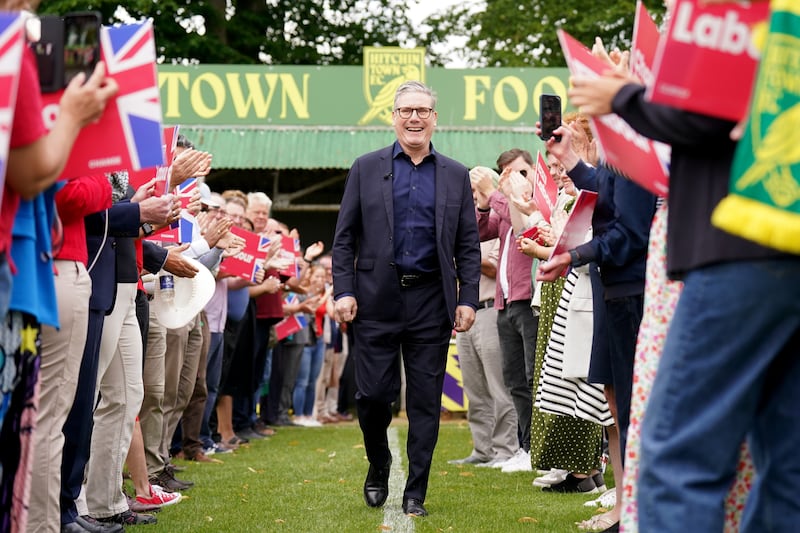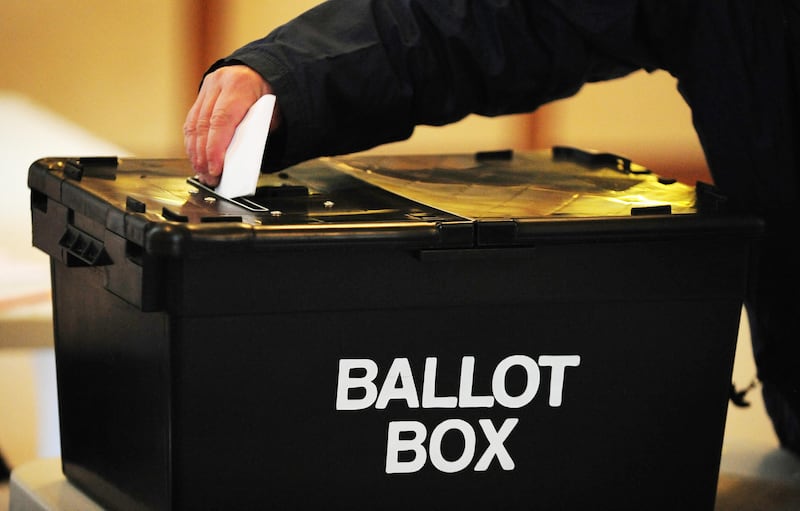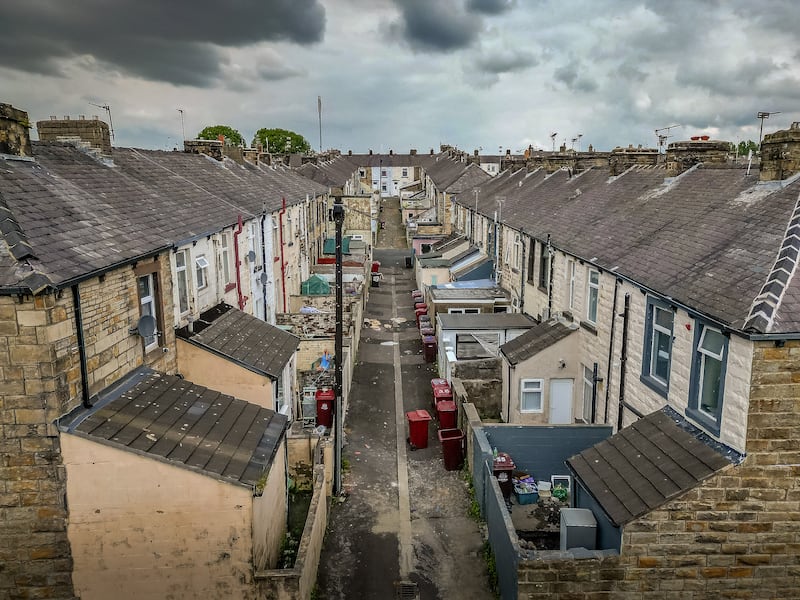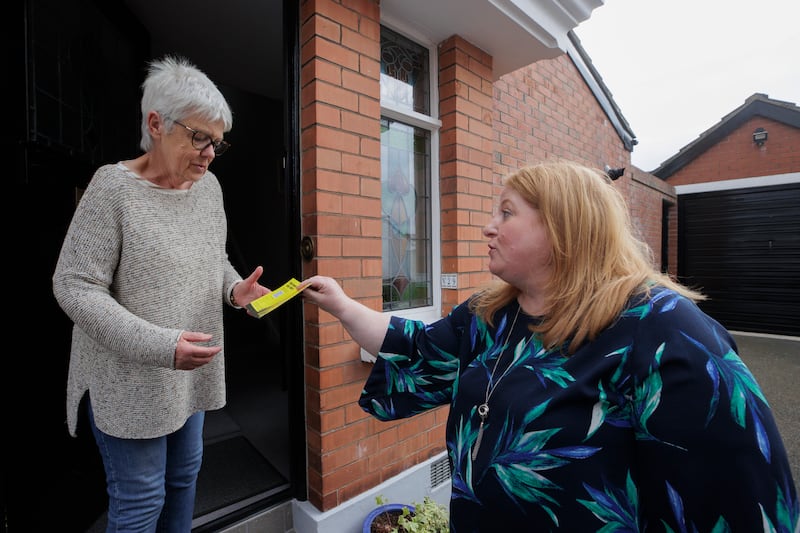A general election takes place in the UK on July 4th. Voters in England, Scotland, Wales and Northern Ireland will go to the polls on Thursday to elect 650 Members of Parliament (MPs) who will represent their constituencies in the House of Commons in Westminster. Here’s all you need to know.
What’s at stake?
Those 650 seats, which will ultimately determine which party forms the next British government.
The magic number is 326; the party that crosses that line will have an overall majority and becomes the next government, with its leader as prime minister.
In practice, the number is slightly lower: the speaker and deputy speakers generally do not vote on legislation, by convention, and Sinn Féin do not take their seats.
READ MORE
After 14 years with the Conservatives at the helm, it appears Britain is heading for a change; the question for many people is not whether Labour will win, but by how much?
The Guardian’s tracker poll, which gives an average of all polls over a moving ten-day period, on July 1st put Labour on 40.7 per cent and the Conservatives on 20.7.

Though it is harder to work out how many seats this will translate into, the projection suggests 428 for Labour and 127 for the Conservatives – in other words, a Labour victory of the kind which swept Tony Blair to power in 1997.
Also in the mix are the Liberal Democrats, which it predicts to return 50 MPs, the Scottish National Party (SNP) on 19, Reform UK on three, Plaid Cymru on two and the Greens on two, with the Northern Ireland parties grouped as “others.”
Of the North’s 18 constituencies, eight are currently held by the DUP, seven by Sinn Féin, two SDLP and one Alliance.
Labour does not stand candidates and the Conservatives, though running in a handful of constituencies, have no prospect of winning, so voters in Northern Ireland generally do not influence the overall result.
How does voting work?
A single MP is elected to represent each constituency, with the winner chosen by the first-past-the-post system. Put simply, the candidate with the highest number of votes, wins.
Polling station open at 7am on July 4th and close at 10pm.
Registered voters must bring a recognised form of photo ID – such as a passport, driving licence or electoral identity card – or they will not be allowed to vote.
Voters indicate their preferred candidate by marking an “X” in the box next to their name on the ballot paper.

Votes can also be cast by postal vote, or by proxy – when a trusted person is nominated to vote on someone else’s behalf.
The summer holidays are expected to have some impact on turnout in Northern Ireland and Scotland; schools there closed for the summer at the end of June, but classes continue in England and Wales until mid-July.
In the North, a record number of postal votes – more than 25,000 – have been issued and about 5,000 proxy votes, while in Scotland the SNP leader John Swinney has said people who have not received postal votes in time are being “disenfranchised” and this could affect the result in marginal constituencies.
When will we know the result?
Polls close at 10pm on Thursday and counting starts immediately – or, as immediately as ballot boxes can be brought from polling stations to the count centres.
The first results are usually in the north-east of England at around 11.30pm; in Northern Ireland, it will be more like 1am, with most seats declared in time for breakfast on Friday.
Unlike in Ireland, where PR-STV means projections are difficult, UK broadcasters traditionally reveal the result of an exit poll at the moment polls close, estimating the overall result with some degree of accuracy.
What are the constituencies to watch?

Election expert Prof Jon Tonge, of the University of Liverpool, will be keeping an eye on the “red wall” seats in the north of England – traditional Labour strongholds which were won by the Conservatives in 2019.
He predicts “they’re going to lose the lot”, with the Conservatives left with “barely any seats” in the north of England and “more likely than not wiped out in Scotland and Wales”.
He will be watching Southport – “it has never, ever had a Labour MP, I’m certain there will be a Labour MP representing it, such is the scale of the change” and Tatton. “If the Conservatives can’t even hold their affluent Northern seats, it’s a real landslide.
“If you want a classic example of the scale of the swing, Labour has been canvassing in Macclesfield, leafy Cheshire, an affluent constituency … Labour are favourites to take it. Unthinkable.”
What about Northern Ireland?

The big battle is between two party leaders in East Belfast, where the DUP’s Gavin Robinson is defending his seat against Naomi Long of Alliance and which, should he lose, could put his leadership of the party in jeopardy.
The DUP has a couple more fights on its hands, in Lagan Valley and in South Antrim; in North Down, Alliance’s Stephen Farry will hope to hold onto his existing seat, as will Pat Cullen for Sinn Féin in the always tight Fermanagh and South Tyrone, and the SDLP leader, Colum Eastwood, in Foyle.
- Listen to our Inside Politics Podcast for the latest analysis and chat
- Sign up for push alerts and have the best news, analysis and comment delivered directly to your phone
- Find The Irish Times on WhatsApp and stay up to date














